Prominent critics describe the “Monsoon Revolution” as a “student-people led uprising that overthrew a mafia state”
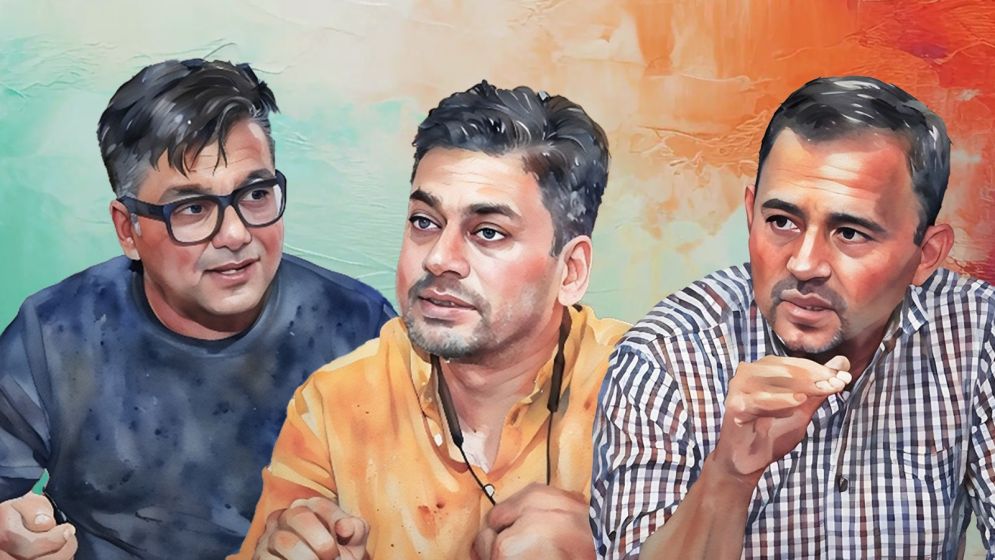
Shafquat Rabbee Anik, Faham Abdus Salam and Zia Hassan (from left to right)
In Bangladesh, Facebook remains the dominant social media platform. While YouTube videos have attracted significant attention and views, if one platform had to represent social media in Bangladesh, it would undoubtedly be Facebook.
On Facebook, individuals like Zia Hassan, Faham Abdus Salam, and Shafquat Rabbee Anik are well-known and widely followed. Despite living abroad—Zia in Germany, Faham in Australia, and Shafquat in the USA—they have been actively sharing detailed analyses on Bangladesh’s politics, economy, education, and international relations, all while managing their demanding white-collar careers in the respective countries.
Over the past fifteen years, they have been prominent critics of Sheikh Hasina’s autocratic regime from their overseas bases. Their critiques are distinguished by their commitment to factual accuracy and enduring relevance, built on thorough analysis and straightforward assessments.
Following the fall of Hasina’s regime, Zia, Faham, and Shafquat have come to visit what many are calling an "independent Bangladesh"—Zia after five years, Faham after ten years, and Shafquat after fifteen years.
On a cloudy afternoon, journalist Faisal Mahmud, editor of Bangla Outlook (English), sat down with the three to discuss the July revolution and its aftermath. Here is an excerpt from that conversation.
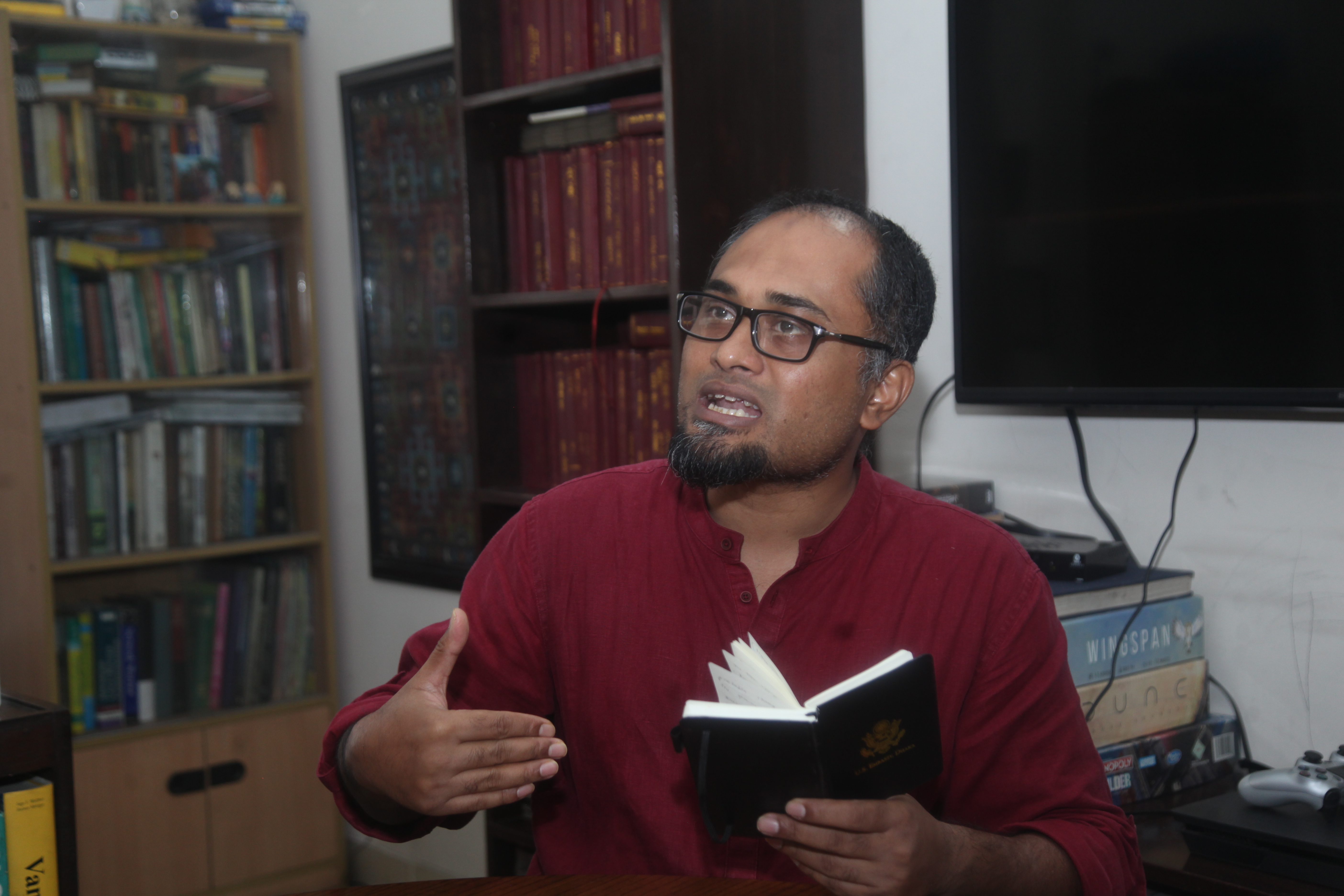
Faisal Mahmud: Let me start with my first question: If you had to describe Sheikh Hasina's fifteen-year rule, including her first term, in one or two words, how would you characterize it? Would you call it a kleptocracy, autocracy, fascist regime, or a mafia state? What terms best capture the essence of her governance? Zia bhai, I would urge you to go first.
Zia Hassan: Sheikh Hasina transformed Bangladesh into a mafia state, where the primary assets were labor-related—specifically, the ready-made garment (RMG) sector and remittances.
By leveraging these assets, she maintained control over the country’s economic structure. However, beyond this economic control, the state functioned like a mafia organization, with a small group of armed loyalists supporting the regime's grip on power. So the fascist framework does not adequately describe this situation; it’s more accurate to characterize Bangladesh under Sheikh Hasina as a mafia state, maintaining a facade of fascism.
FM: What’s the difference between them?
ZH: In classical fascism, an ideology is upheld as the best solution for the country, and the regime seeks to control all aspects of society to resist opposition, dismissing the need for democracy. This is the classic template for a fascist regime.
However, Sheikh Hasina's regime, while presenting a facade of fascism, essentially operated as a mafia state. In a mafia state, power is wielded by a few clans that establish family-based organizations, controlling various sectors and extorting money through rent and other means.
This system resembles the mafia structures seen in places like Russia. Therefore, I would argue that the previous regime was fundamentally a mafia state, merely masquerading as a fascist regime.
FM: What’s your take on this Faham bhai?
Faham Abdus Salam: The main issue here is that labeling Hasina’s regime as a fascist regime is inaccurate. Fascism entails a specific political program with clear goals, such as national unity, a focus on nationality, and the glorification of the past.
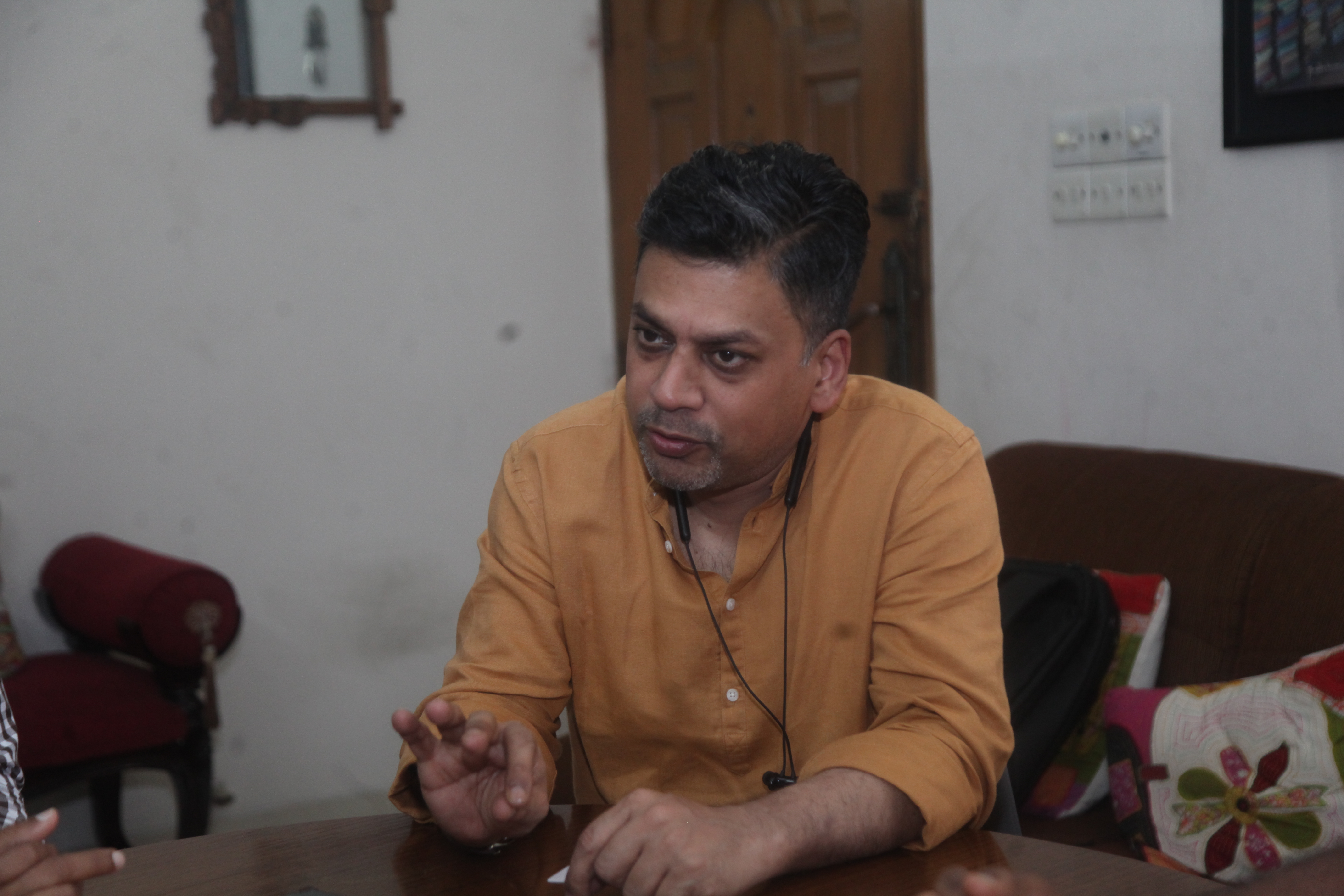
Mussolini, for instance, would likely reject calling Hasina a fascist because her regime lacks these defining elements. Hasina’s rule was more about personal gain and theft than pursuing any ideological goals. Although we often refer to her regime as fascist, I’ve used the term "fasci-chortontro" (fascist kleptocracy) in other contexts.
This term reflects the regime's fascist-like behavior—intolerant and authoritarian—but acknowledges the absence of fascism's idealistic aspects. Essentially, as Zia Bhai noted, the regime's core characteristic is theft, with the primary aim being to preserve and benefit her own clan by any means necessary, including enabling corruption.
I’ll illustrate this with a specific example: in 2013, Mohiuddin Khan Alamgir (former Awami lawmaker and minister) visited Canberra and met with Awami League insiders. During the meeting, someone asked him why they were allowing the Chhatra League to be so violent. Alamgir responded that they wanted the Chhatra League to commit numerous crimes, ensuring that their self-preservation would compel them to protect the Awami League.
At the time, this explanation seemed strange to me, but now I understand that this mindset was not unique to Alamgir; it was a common belief among Awami League members. The prevailing concept was to ensure the survival of their clan, with Sheikh Hasina as the guarantor and unconditional support from India as a means to maintain their power indefinitely. And indeed, that’s what transpired.
FM: Anik Bhai, how would you define Sheikh Hasina’s regime in one or two words?
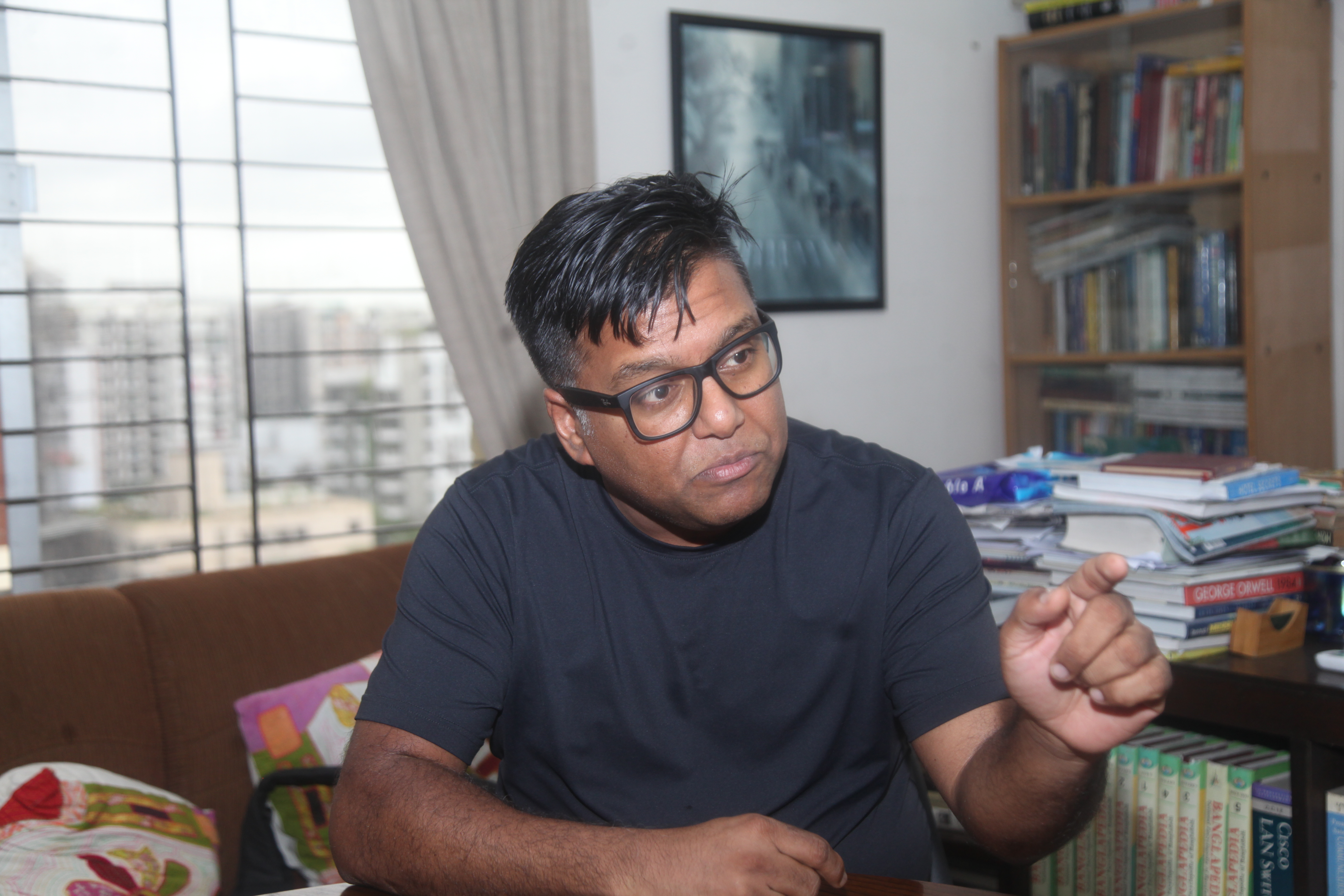
Shafquat Rabbee Anik: I would describe it in four words, closely aligning with Faham Bhai's view: a totalitarian cult of thugs and thieves. The Awami League operated much like a cult, with its own stories, beliefs, and methods, as Faham Bhai previously mentioned. Cults are often characterized by their insularity and puritanism, favoring those who are most dedicated.
In this context, 'thugs and thieves' refers to the group's nature, encompassing both robbers and violent individuals. Historically, thugs were marauding groups who conquered territories through violence, similar to the Mongols. The Awami League functioned as a cult of thugs, demanding allegiance and employing a patronage system where loyalty ensured survival and success.
Sheikh Hasina, contrary to popular belief, is no strategist. Her approach is defined by an absence of limits on the violence she will use to maintain power. Her primary strategy is that there are no bounds to the extent of violence she will employ—politics for her involves eliminating opposition rather than convincing them. This totalitarian cult of thieves and thugs is marked by its boundless appetite for violence.
FM: Let me turn to my next question. Given the events that unfolded throughout July and reached a peak on August 5th, how would you classify it—was it a mass upsurge or a revolution? What distinguishes the two?
ZH: In Bangla it sounds better…it was a “gono-obbhutthan” of students and public.
FM: So it was a student-people uprising, because the English translation of ‘’obhhutthan” is uprising, not a revolution, right?
ZH: It was not a revolution in the traditional sense. While I’m not fully versed in the classic definition, a revolution typically involves the complete dismantling of the existing system—whether it’s the economic structure or the social order.
Although there was an effort to challenge and disrupt the totalitarian regime of the Awami League, the movement did not aim to create a new economic order, as is characteristic of a classic revolution. However, I find value in Anik Bhai's perspective: the removal of a totalitarian cult of thieves and thugs can be considered a form of revolution in itself.
FAS: In my view, it wasn’t a revolution. To illustrate why, let’s look at the students' actual demands: they wanted a fair process, [under capitalism], and job opportunities in public service—but they sought these within a fair framework.
They did not call for socialism or any specific ideological change. Their demands can be categorized into two main areas: rule of law and meritocracy. Rule of law pertains to their fight against discrimination, while meritocracy relates to their call for quota reform.
These principles are also found in socialism, Islam, and capitalism. The students did not seek to overhaul the existing system. Thus, it wasn’t a revolution. However, it was a mass uprising, and any mass uprising can contain a revolutionary element.
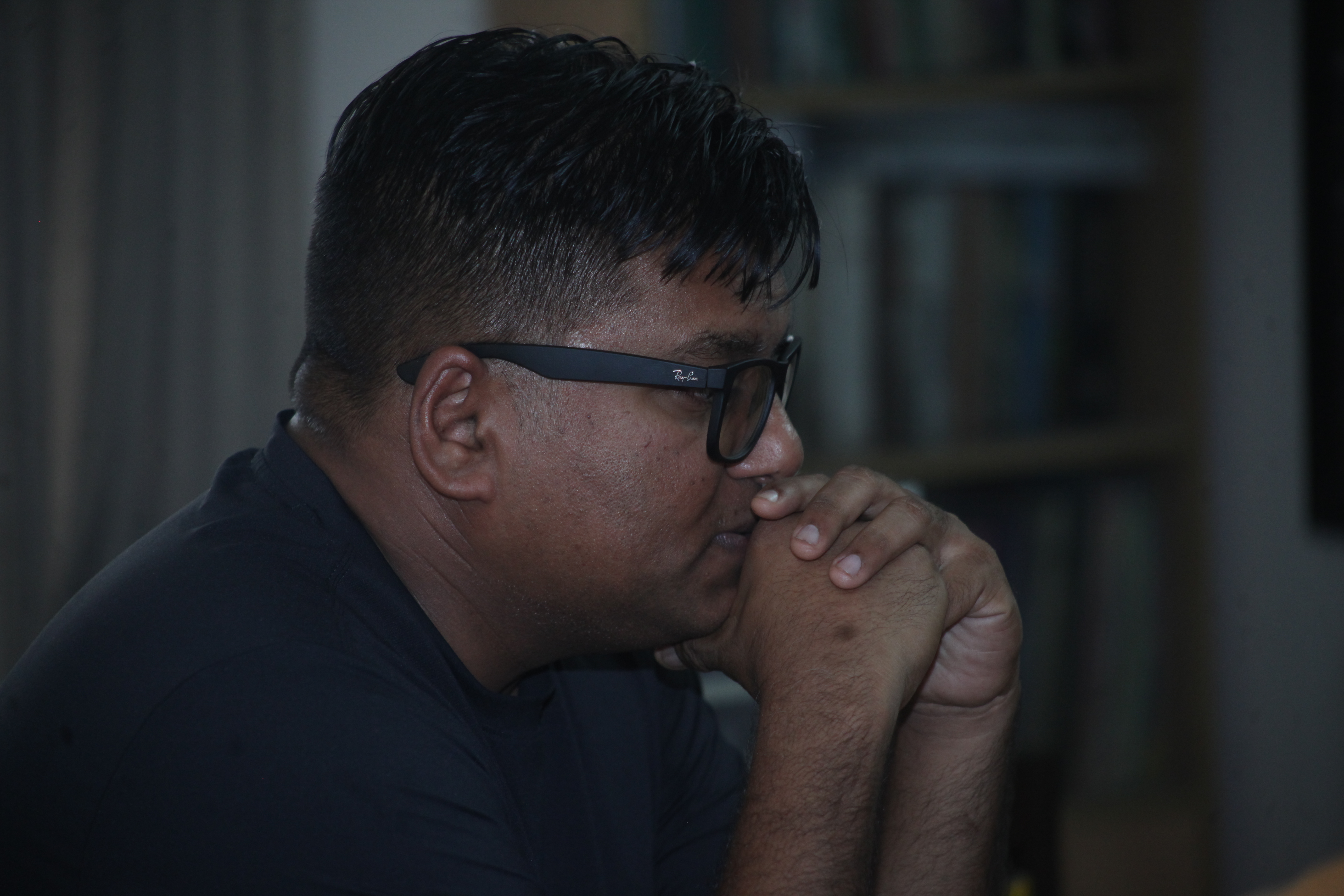
SRA: The term "revolution" carries significant weight and often romantic connotations, so I'll focus on the practical aspects. As previous speakers have noted, it's unclear if what happened qualifies as a full-fledged revolution.
By the end, however, it did escalate into what could be described as a mini civil war, given the high death toll—reports indicate that nearly hundreds of police were killed, with targeted attacks aimed at law enforcement. These are elements typical of civil war scenarios, especially towards the end.
Initially, the movement started with demands for fair treatment in public service exams, not for the complete overhaul of the testing system or the destruction of the bureaucracy. Those revolutionary elements were absent. For comparison, the Arab Spring began with a shopkeeper’s self-immolation in protest against bribery.
He wasn’t leading a revolution against bribery per se; he was voicing his frustration, which eventually ignited a mass uprising. Similarly, while the conditions for overthrowing the government had been brewing for years, the students initially sought minor reforms within the civil bureaucracy. Their actions sparked a larger uprising that ultimately led to the government's downfall and culminated in a mini civil war, characterized by intense combat and significant casualties.
FM: Sheikh Hasina has successfully suppressed many opposition movements over the past 15 years, including the 2018 protests. Why was she unable to control this particular movement? Please provide one or two key reasons rather than a detailed analysis.
FAS: In my view, one major reason for the success of this movement was that it drew support from a diverse group of people, not just a specific faction. Previously, movements were led by particular groups such as students, quota reform activists, or supporters of BNP, Jamaat, and Hefazat.
However, after Abu Saeed's death, the fatalities included students from English-medium schools, members of BNP and Jamaat Islami, and others, indicating a broader and more unified outrage.
This mass killing triggered widespread simultaneous anger, which was a key factor. The incident on the 17th, right after Abu Saeed's death, highlighted the regime's loss of moral and pragmatic authority. The government's inability to manage the economy and its violent crackdown made it clear that they could no longer govern effectively. Although I expected the regime's downfall to take a month or so, the rapidity of the collapse was surprising.
Additionally, the movement gained unprecedented global attention and support after the 18th, including endorsements from unlikely sources such as Ivy League professors. This broad support extended to the urban middle and elite classes, who withdrew their backing of the Awami League—a key factor that had been missing in previous movements. This widespread and diverse involvement contributed to the success of the uprising.
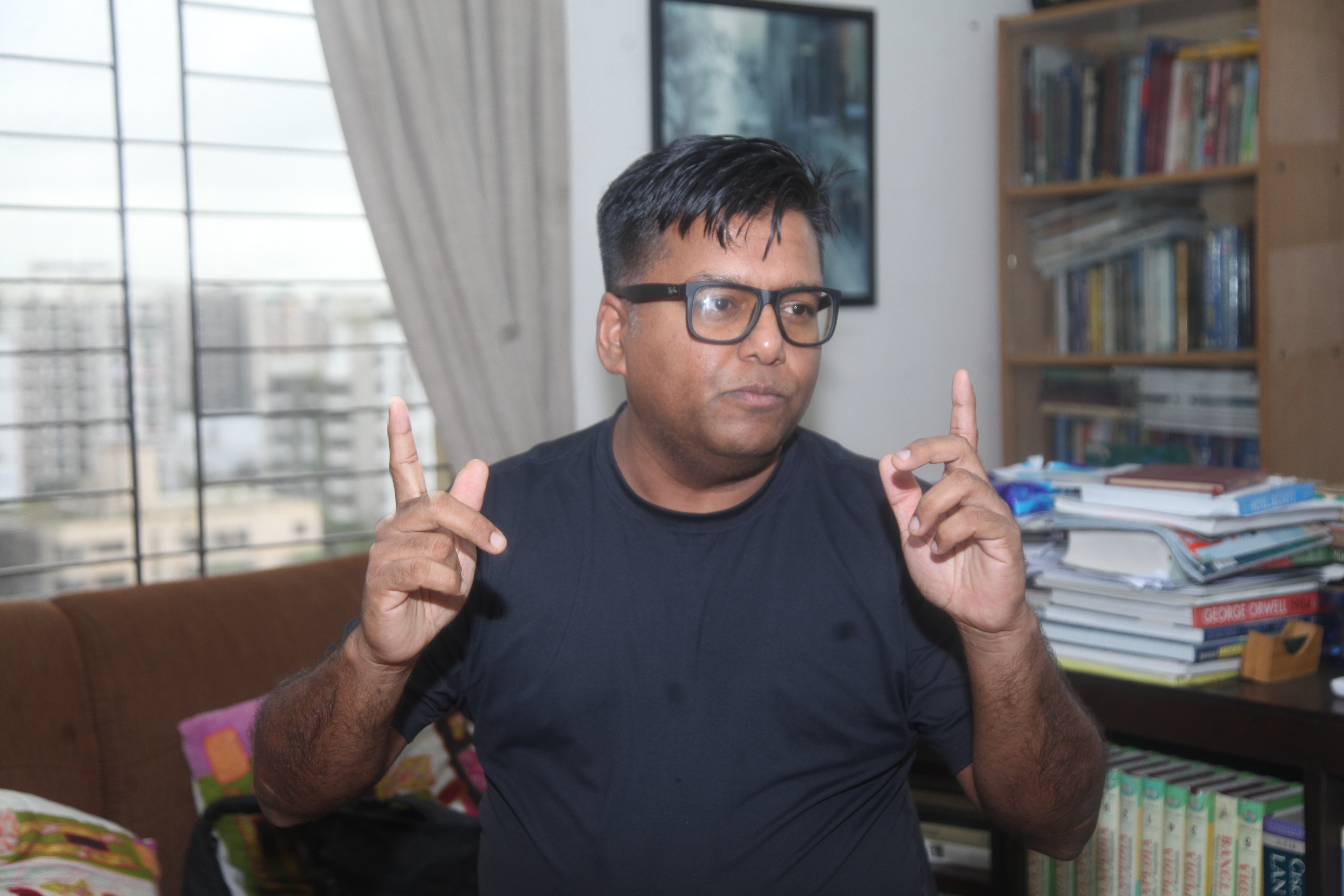
SRA: I would say that Faham Bhai and I would agree on this point: in any street conflict, once you're engaged, the fight often becomes personal rather than ideological. You don't fight for a cause; you fight for the person next to you. When someone attacks your comrade or harms someone close to you, the fight becomes about seeking justice for that person.
This dynamic is evident historically—consider, for instance, how U.S. soldiers in Iraq, despite initially being sent for a larger purpose, often fight because of personal grievances, like losing a fellow soldier.
Similarly, in the current situation, the individuals who took to the streets weren't primarily motivated by demands for quotas. For example, one girl said she didn’t need a quota job because she would be married off, yet she joined the movement because the Awami League targeted everyone indiscriminately.
As Faham Bhai pointed out, the regime operated like a band of thugs and thieves, relying heavily on violence to maintain control. By the end of their tenure, their only remaining tool was to kill more people, which further fueled the outrage.
The overuse of violence—killing your child, my child, or anyone else's—ignited a visceral response. When people saw that those being harmed were like their own loved ones, they didn’t have time to analyze the broader cause. They reacted emotionally to the violence and participated in the movement because they could relate to the suffering inflicted on others.
ZH: Let me provide a detailed analysis. The patterns for overthrowing a government through mass movements are well-documented globally, from the 1969 movement to the protests against Ershad. This movement adhered to those classic patterns. Sheikh Hasina's arrogance and overconfidence prevented her from recognizing and disrupting these patterns, although she managed to address them to some extent in the initial week.
The pattern typically starts with a trigger event, which prompts the government to suppress its aftermath. This suppression often leads to property destruction and casualties, resulting in moral outrage among the public. This outrage drives more people to join the movement.
During the student protests, as the new participants take to the streets, they provoke further responses from the police or Bangladesh Chhatra League (BCL), leading to additional casualties and escalating moral outrage. This cycle creates a positive feedback loop, resulting in exponential growth of the movement.
A better interpretation of the situation is that the pattern seen in this movement mirrors that of the 1969 uprising against Ayub Khan in East Pakistan. Sheikh Hasina's initial arrogance may have been manageable, but she failed to adapt as the situation evolved. She did not recognize how moral outrage was escalating among the people, particularly in response to the mistreatment of female students.
Confident in her control over the police and military, she believed she could suppress the movement through violence. However, the increasing violence and the resulting deaths of students and the expulsion of female students from their dorms only fueled further participation in the movement.
There was a moment of concern when an internet blackout was imposed, followed by the deployment of the army. This action seemed to disrupt the movement's momentum and shift it from a positive to a negative feedback loop. However, credit is due to the students for their strategic response.
The thing is the initial trigger for moral outrage had already occurred earlier that week, with the deaths of 150 boys on the streets of Dhaka, including students from private universities. At that point, another event to incite outrage wasn't necessary; what was needed was a new trigger.
The students however wisely chose to remain calm and restrained during that week, which I acknowledged as a correct decision. Initially, I was doubtful, as gathering a large crowd on a Friday (August 2) morning would require substantial activation energy, which seemed lacking. Despite my concerns about the lack of immediate crowd mobilization, the students' call for nationwide non-cooperation and the mosque declarations for prayers and rallies were appropriate strategies.
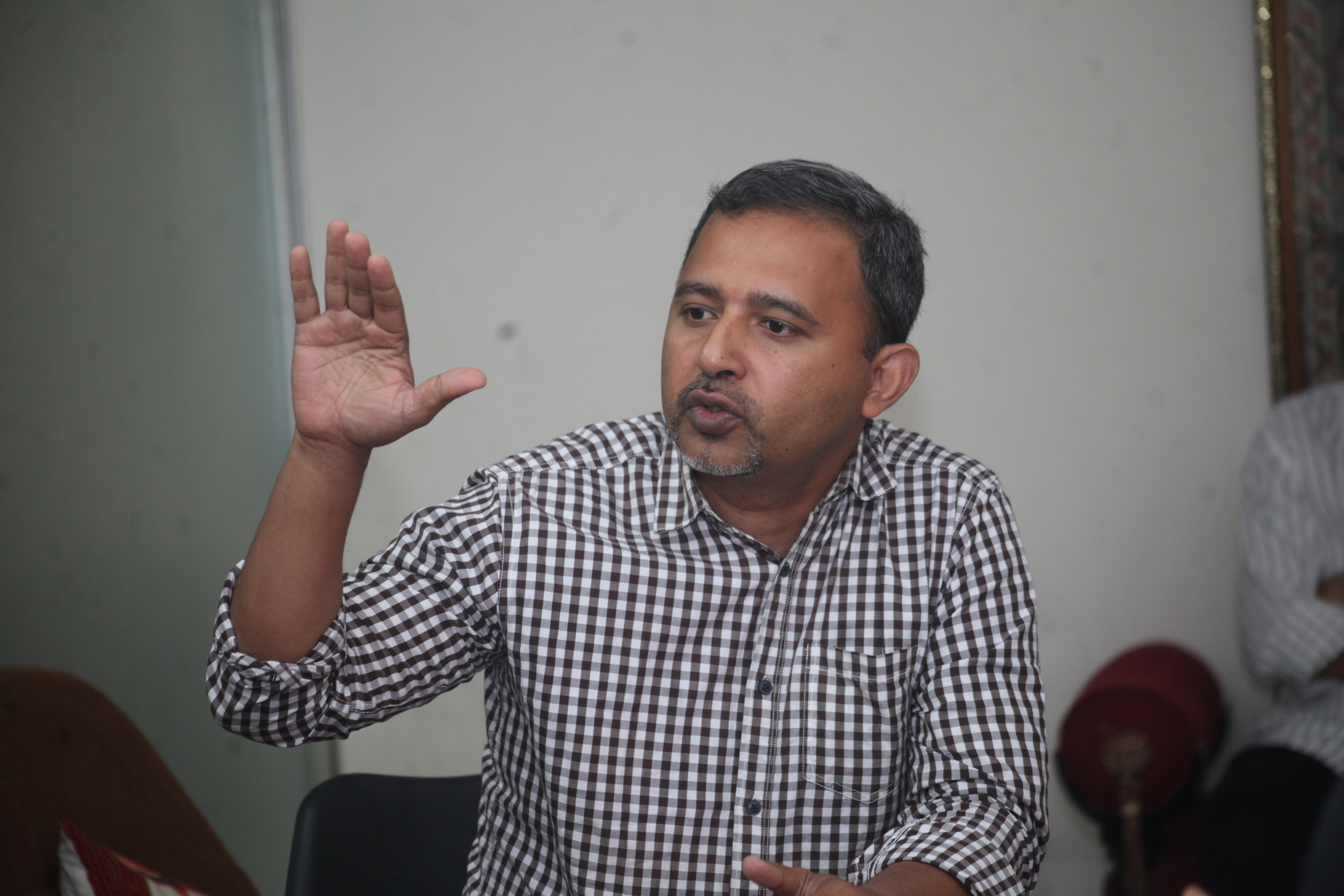
By Friday afternoon, I was worried that the necessary activation energy hadn’t been reached. However, from 2:30 p.m. onward, reports of significant events in Khulna and other regions indicated a resurgence in movement activity. This new surge in activation energy led to rapid, exponential growth in the movement, ultimately resulting in the government's collapse. This progression aligns with the classic theories of American political scientist Gene Sharp.
FM: Regarding the interim government that has been established, it's positive that a military regime has not taken over. Given the current characteristics of the interim government, what are your thoughts on its role and objectives? How do you assess their performance and what do you believe should be their primary goals?
ZH: I believe the primary goal of the interim government should be to embody the revolutionary spirit of the recent movement in their policies. Their initiatives should be implemented in such a way that any future government, whether BNP or another party, will be compelled to continue with these programs.
Specifically, a crucial area is police overhaul. The term "reform" might not suffice here because the changes required are so extensive—they involve a complete reorganization of the police. The public's destruction of about ninety percent of police stations highlighted the deep-seated issues: these stations had become centers of torture under the Awami League. Officers were often selected based on their loyalty to the Chhatra League, and the system was used to suppress society and extend Sheikh Hasina's power.
Bangladesh's message was clear: the current police force is no longer acceptable. Therefore, significant police restructuring is critical. I believe that those employed in higher ranks since 2009 should be reassigned to other roles to prevent their return to the police force.
FM: Anything about the election?
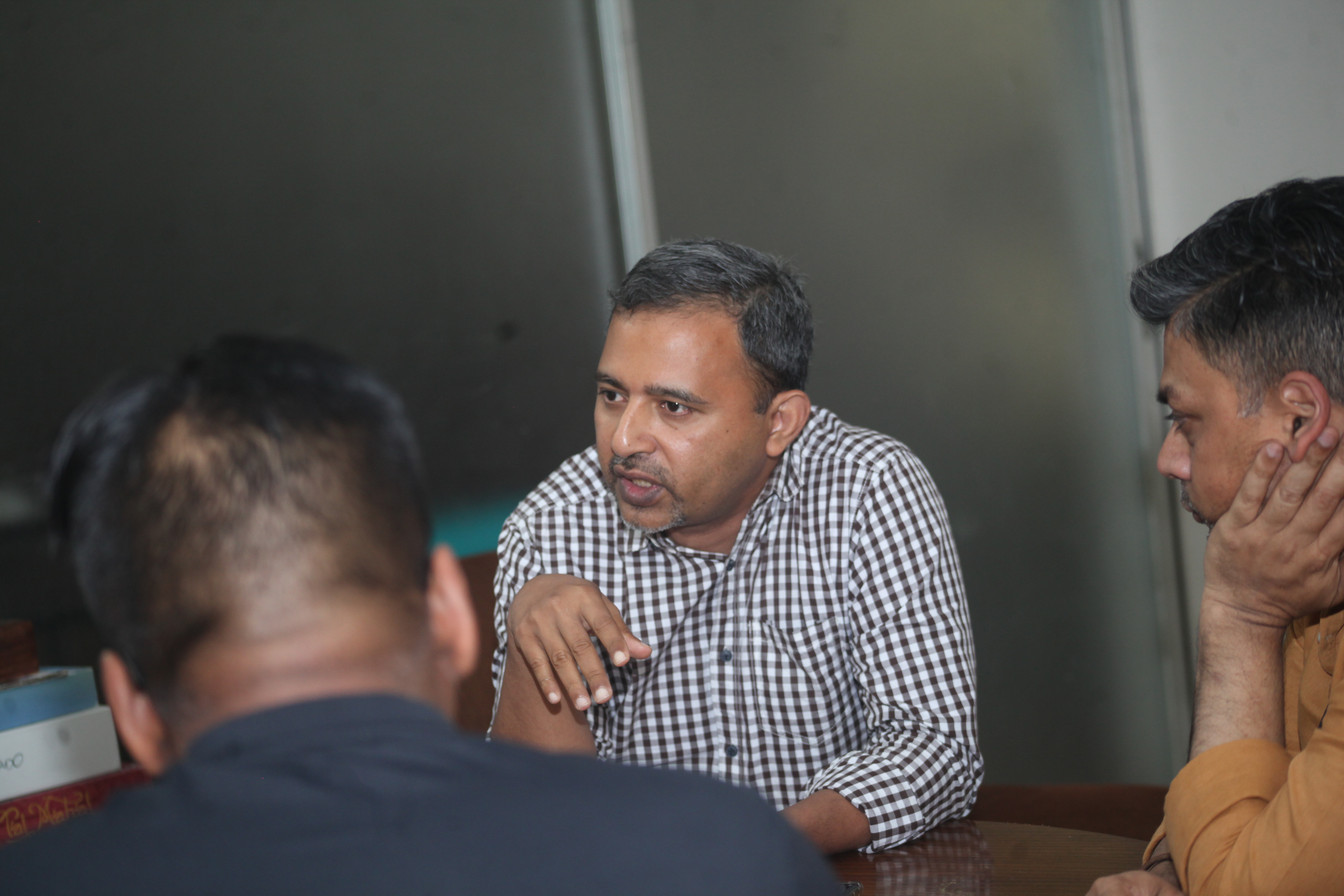
ZH: Regarding the election, my perspective aligns with Anik Bhai’s argument: an event often starts at one point but can evolve in various directions over time. This is a crucial historical moment for us. Although the nine-point demand didn’t include state reform, it presents an opportunity. I believe the interim government should be allotted a minimum of two years, but no more than three years, to carry out necessary changes.
FAS: I personally think the current interim government is significantly different from 2008-09. The previous interim government was heavily backed by the military, whereas the new interim government has a partnership with the military but isn't as dependent on it. The military isn’t in the forefront this time.
The current interim government is driven by a revolutionary zeal that can be likened to children creating their own rules during play. Just as children establish their own guidelines for their games, this interim government is shaping new principles and aspirations. This dynamic reflects the emergence of a new set of rules or norms.
I believe that a sense of revolutionary zeal, which emphasizes the need for a fairer society and individual participation, is something new in Bangladeshi society. While each person may have their own idea of fairness, the collective desire to engage in creating a just society is a positive development.
However, it is crucial that the interim government addresses the trials for those responsible for the July massacre. While I don’t expect every perpetrator to be executed after a trial, a clear plan must be put in place. I recently learned that the capacity to try these perpetrators is limited, and finding out who was responsible can be a lengthy process.
To expedite this, the government should consider setting up a website for crowdsourcing information on the incidents, allowing the public to contribute and ensuring quality control. If the government lacks sufficient trial lawyers—reportedly only ten expert trial lawyers are available—then they should acknowledge this shortage and seek help to build their capacity. A direct appeal for assistance, demonstrating genuine commitment to the trials, would be a constructive step. As of now, there seems to be a lack of seriousness about conducting these trials.
Regarding the elections, my primary concern isn’t the specific timing but rather the commitment to a clear roadmap. If more time is needed, a reasonable extension could be granted, but open-ended deadlines are problematic. For both the government and the military, a firm commitment to a defined timeline is essential, as vague timelines are generally unproductive and problematic for all parties involved.
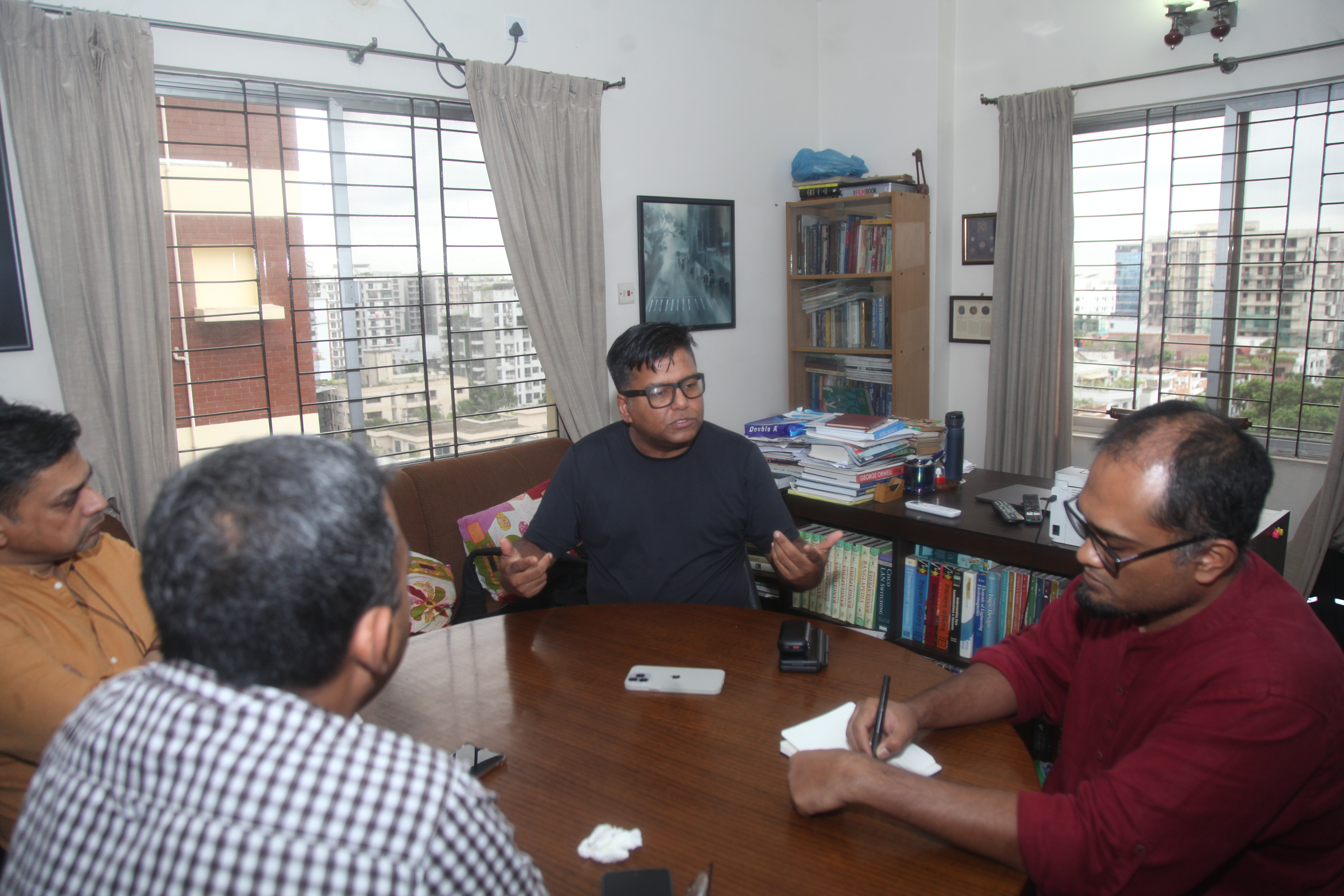
SRA: An unelected government should not remain in power for an extended period—ideally, no more than twelve months. We have data from previous interim governments showing that meaningful reforms can be implemented relatively quickly.
For example, during Latifur Rahman's tenure, 35 secretaries were transferred on the first night, and 35 ministries were restructured immediately. This level of decisive action should be the expectation, yet the current interim government has not taken such steps. The lack of progress may be attributed to the current state of trauma and fear among the populace.
There are concerns about the competence of some members of the interim government. Many lack experience managing complex organizations and seem to have only limited expertise in specialized areas. The suggestion that the interim government could remain in power for six years is unrealistic and reflects a lack of understanding of the challenges involved. Historical data shows that interim governments typically face significant difficulties if they extend beyond two or three years.
Given the potential for increasing instability and the limitations of the current leadership—despite its prestigious background—a realistic timeline for the interim government would be twelve to fourteen months. This timeframe is sufficient to implement meaningful reforms, as historical precedents suggest. The interim government must commit to this realistic timeline to avoid prolonged instability and ensure effective governance.
FM: For my final question, I’ll combine two aspects for you: considering the international dynamics involving neighboring countries like India, China, and the US, along with the interim government led by Dr. Yunus who has a notable reputation—what kind of international pressure might Bangladesh face? Additionally, how will the interim government respond to this pressure, and what strategies might they employ to address it?
SRA: The international community is likely to back Yunus throughout his tenure, even if he were to propose running the interim government for three years. However, such a long term might not be advisable.
On the other hand, India's current rhetoric openly acknowledges that Sheikh Hasina was considered an asset to them, with formal statements indicating that Hasina was a national security interest for India. Despite this, given that Hasina is 76, it’s unlikely that India would take drastic measures to reinstall her, especially since historical precedents show that deposed leaders rarely return to power after a few years.
India will pursue its own interests and exert pressure to reinstall figures they see as beneficial to their agenda, but I’m not overly concerned about a dramatic return of Hasina. The reality is that if Yunus seeks to extend his term, the international community will support him.
However, local chaos is expected to arise within six months. This chaos will stem from various groups asserting their newfound democratic rights, which, while positive, will lead to significant disorder. In this scenario, the international community’s role will be more reactive, responding to the internal turmoil rather than shaping it.
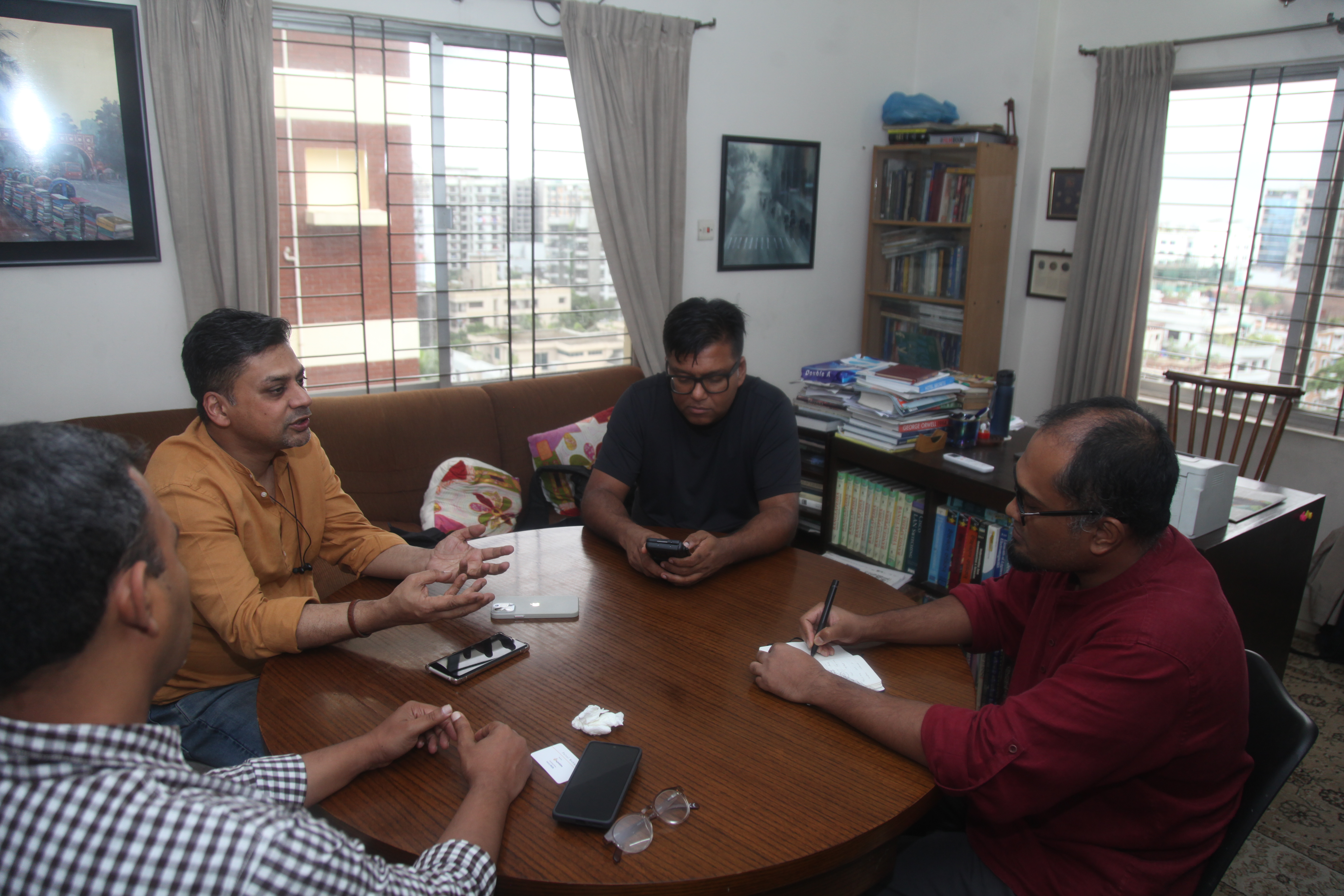
FAS: I don’t think international players had a significant role in the recent movement. In a discussion with several military personnel yesterday, I noted that there's a misconception among some Bangladeshis that the interim government is backed by the CIA.
In reality, it was a genuinely grassroots movement. Participants included Jamaat-Islami members, Shibir, Chattro Dal, students, and even common girls. The diverse involvement doesn’t make it even a feminist movement [if someone wants to portray it as such]; it was representative of various societal segments.
Regarding international support, I agree with Anik that, apart from India, most countries would support the Yunus administration. Appointing Dr. Muhammad Yunus to head the government was a strategic choice, as his reputation makes it difficult to categorize him easily.
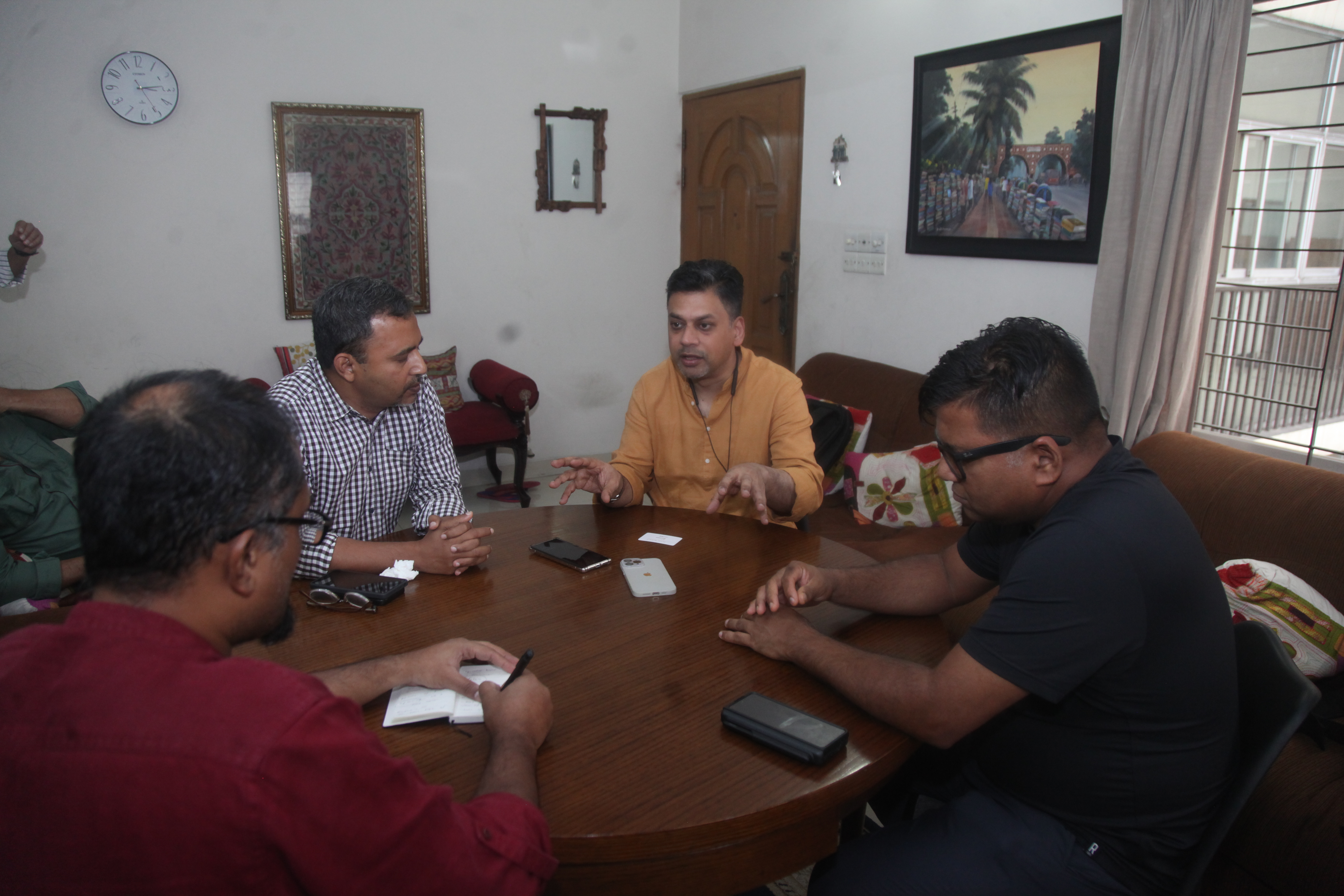
However, India is in denial about the situation. They’ve built a narrative over the past 15 years that distorts the reality of Bangladesh’s political landscape. Because of this, responsible analysts in India, who should understand Bangladesh, are still perpetuating false claims, such as the idea that this uprising was orchestrated by Jamaat-Islami with an Islamic agenda.
What Anik bhai said resonates with me—challenges are inevitable. For instance, inflation is likely to continue affecting the economy in the coming months, leading to further difficulties. How the interim government will handle these issues remains to be seen. Meanwhile, India’s reluctance to accept the situation as it is raises questions. Hosting a highly controversial leader like Hasina could impact how Bangladeshis perceive the situation, reflecting a deep disconnect between Indian perceptions and Bangladeshi realities.
FM: Zia Bhai, could you share your thoughts on China's role in this situation?
ZH: I have some doubts about whether China strongly supported the previous government, as many have said it did. Observing the pattern of Chinese investment, it's evident that since 2022, China has not committed to any new major projects, and its annual support for existing ones has fallen below $1 billion.
This situation presents an opportunity for the current regime to establish a trust-based relationship with China, leveraging its substantial financial resources for Bangladesh. Sheikh Hasina failed to capitalize on this opportunity.
Regarding international support, I agree with Anik Bhai that global alliances will largely favor the interim regime. My concerns extend beyond India; I worry about the potential for instability stemming from Sheikh Hasina. There are records of her supporters alleging she incited violence including killing and burning buses.
With the ease of travel between India and Bangladesh, there is a risk that India might engage in destabilizing actions, such as bombings, to undermine Bangladesh. It remains uncertain whether India will restrain Sheikh Hasina.
From an economic perspective, in recent years, the bulk of foreign aid to Bangladesh has come from the World Bank, IMF, ADB, and Japan. The ADB and Japan have significant interests in countering China in the region, with Japan seeing Sheikh Hasina as a strategic ally.
In her absence, how India will navigate its influence within the ADB remains uncertain. Japan, which has been a major financial backer of Sheikh Hasina, has shifted its support from purely humanitarian to strategic. This shift presents an opportunity for the interim regime to seek greater assistance from China, given Japan's significant influence over the ADB. How this will unfold is a strategic decision that the interim regime and future leaders will need to address.
FM: Thank you all.
—--

